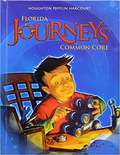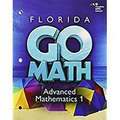- Table View
- List View
Florida Journeys Common Core, Florida Benchmark and Unit Tests, Grade 2
by Houghton Mifflin HarcourtNIMAC-sourced textbook
Florida Journeys Common Core, Florida Benchmark and Unit Tests, Grade 1
by Houghton Mifflin Harcourt Publishing CompanyNIMAC-sourced textbook
Florida Interactive Science: Physical Science
by Michael J. Padilla Don Buckley Zipporah Miller Kathryn Thornton Michael E. WysessionNIMAC-sourced textbook
Florida Interactive Science: Life Science
by Michael J. Padilla Don Buckley Zipporah Miller Kathryn Thornton Michael E. WysessionNIMAC-sourced textbook
Florida Interactive Science: Earth and Space Science
by Michael J. Padilla Don Buckley Zipporah Miller Kathryn Thornton Michael E. WysessionNIMAC-sourced textbook
Florida Interactive Science, Kindergarten, [Interactive Science Journal]
by Don Buckley Zipporah Miller Kathryn ThorntonNIMAC-sourced textbook
Florida Interactive Science, Course 3
by Michael J. Padilla Don Buckley Zipporah Miller Kathryn Thornton Michael E. WysessionNIMAC-sourced textbook
Florida Interactive Science, Course 2
by Michael J. Padilla Don Buckley Zipporah Miller Kathryn Thornton Michael E. WysessionNIMAC-sourced textbook
Florida Interactive Science, Course 1
by Michael J. Padilla Don Buckley Zipporah Miller Kathryn Thornton Michael E. WysessionNIMAC-sourced textbook
Florida Interactive Science [Grade 5]
by Michael J. Padilla Don Buckley Zipporah MillerNIMAC-sourced textbook
Florida Interactive Science [Grade 4]
by Michael J. Padilla Don Buckley Zipporah MillerNIMAC-sourced textbook
Florida Interactive Science [Grade 3]
by Michael J. Padilla Don Buckley Zipporah MillerNIMAC-sourced textbook
Florida Interactive Science [Grade 2]
by Michael J. Padilla Don Buckley Zipporah MillerNIMAC-sourced textbook
Florida Interactive Science [Grade 1]
by Michael J. Padilla Don Buckley Zipporah MillerNIMAC-sourced textbook
Florida Holt Science & Technology, Level Green
by Katy Z. Allen Linda Ruth Berg Mario AffatigatoNIMAC-sourced textbook
Florida Holt Elements of Literature, Third Course
by Kylene Beers Carol Jago Deborah ApplemanNIMAC-sourced textbook
Florida History Makers, Second Grade Social Studies: Second Grade
by Kim Mogilevsky Shawn P. MabryNIMAC-sourced textbook
Florida History Makers, Second Grade Social Studies: My Country and My State, Student Workbook
by Kim Mogilevsky Shawn P. MabryNIMAC-sourced textbook
Florida History Makers, Kindergarten Social Studies: Student Edition
by Kim Mogilevsky Shawn P. Mabry Shari L. Markowitz Stephanie MahlerNIMAC-sourced textbook
Florida History Makers, First Grade Social Studies: Student Edition
by Kim Mogilevsky Shawn P. Mabry Shari L. MarkowitzNIMAC-sourced textbook
Florida Go Math: Mathematics 2
by Timothy D. Kanold Edward B. Burger Juli K. Dixon Steven J. Leinwand Matthew R. Larson Martha E. Sandoval-MartinezStandards for Mathematical Practice. The topics described in the Standards for Mathematical Content will vary from year to year. However, the way in which you learn, study, and think about mathematics will not. The Standards for Mathematical Practice describe skills that you will use in all of your math courses. These pages show some features of your book that will help you gain these skills and use them to master this year's topics.
Florida Go Math! Pre-Algebra
by Timothy D. Kanold Edward B. Burger Juli K. Dixon Steven J. Matthew R. Larson Martha E. Sandoval-Martinez LeinwandMiddle School Math Workbook
Florida Go Math Advanced Mathematics 1
by Timothy D. Kanold Edward B. Burger Juli K. Dixon Matthew R. LarsonA mathematics textbook for middle school


